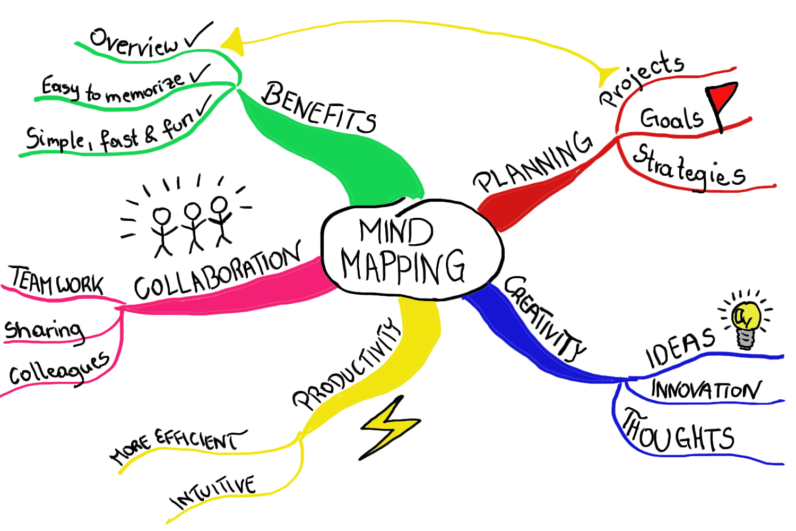Mind maps are a creative marketing process used to visually organise an idea, a subject, a business – just about anything. They provide a picture, not words on a page, and help to understand and process complex information.
There are many types of mind maps, and they can be used in a variety of ways. Some encourage the use of colour, different fonts or even images, and serve to create a picture of the problem or idea the map-creator seeks to untangle.
Originally drawn organically using a pen and a piece of paper, now there are various software programs and apps dedicated to this creative technique which can aid marketing strategy development.
Why use a mind map?
Mind maps serve to remove fluff and jargon and help people to concentrate on creating a channel of clear messaging.
First define – what is your key goal message.
Then remove the noise and the bias of both the sender and the receiver and distil the communications to hit the mark.
There are lots of reasons why mind maps are useful but the most commonly agreed are:
- Visually structure information
- Aid in the understanding of this information
- Organise information and how it fits together
- Learn about your subject
- Understand key messages and which ones are less important to your particular communication
- Help you generate and share creative ideas
How to use a mind map?
We advise keeping it simple and to not to get too hung up on rules. As a very basic example follow the steps below to get started.
- Start with your central concept in a bubble right in the middle of a blank page
- Think about all associated ideas to this central concept and note them down on the page – spend some time on this so you can get it out of your head and onto the page (don’t worry about there being any order or structure at this stage, that comes later)
- Discount or cross out those ideas that are not relevant to the key message in this instance
- Highlight those ideas you feel important to the key goal message
- Prioritise or number those you have highlighted above
- Structure your written communication based on the mapping above with the ideas in order and linked together to hit your key message goal
Which Mind Map to use?
With so many Mind Maps on the market this can present a conundrum if you are new to the concept.
Start with something simple, a good example is Spidergram. A Spidergram has a central concept/subject/theme in a bubble in its middle and then eight bubbles around it.
This is just a guide and the spider can have more or less than the eight legs (as such). To promote quick thinking and ease of use, sketching it out on a piece of paper helps.
And just like that – you are mind mapping!







